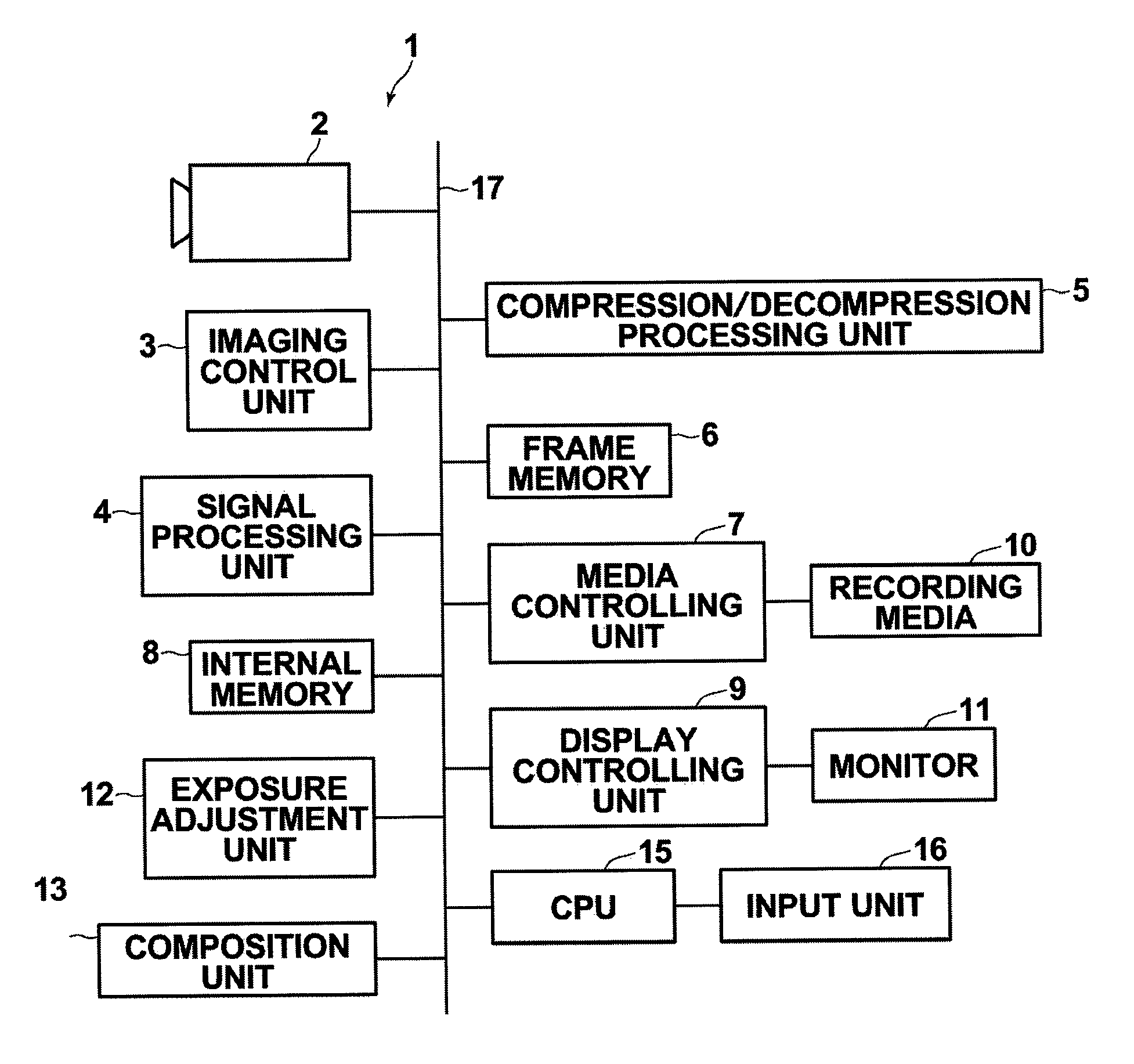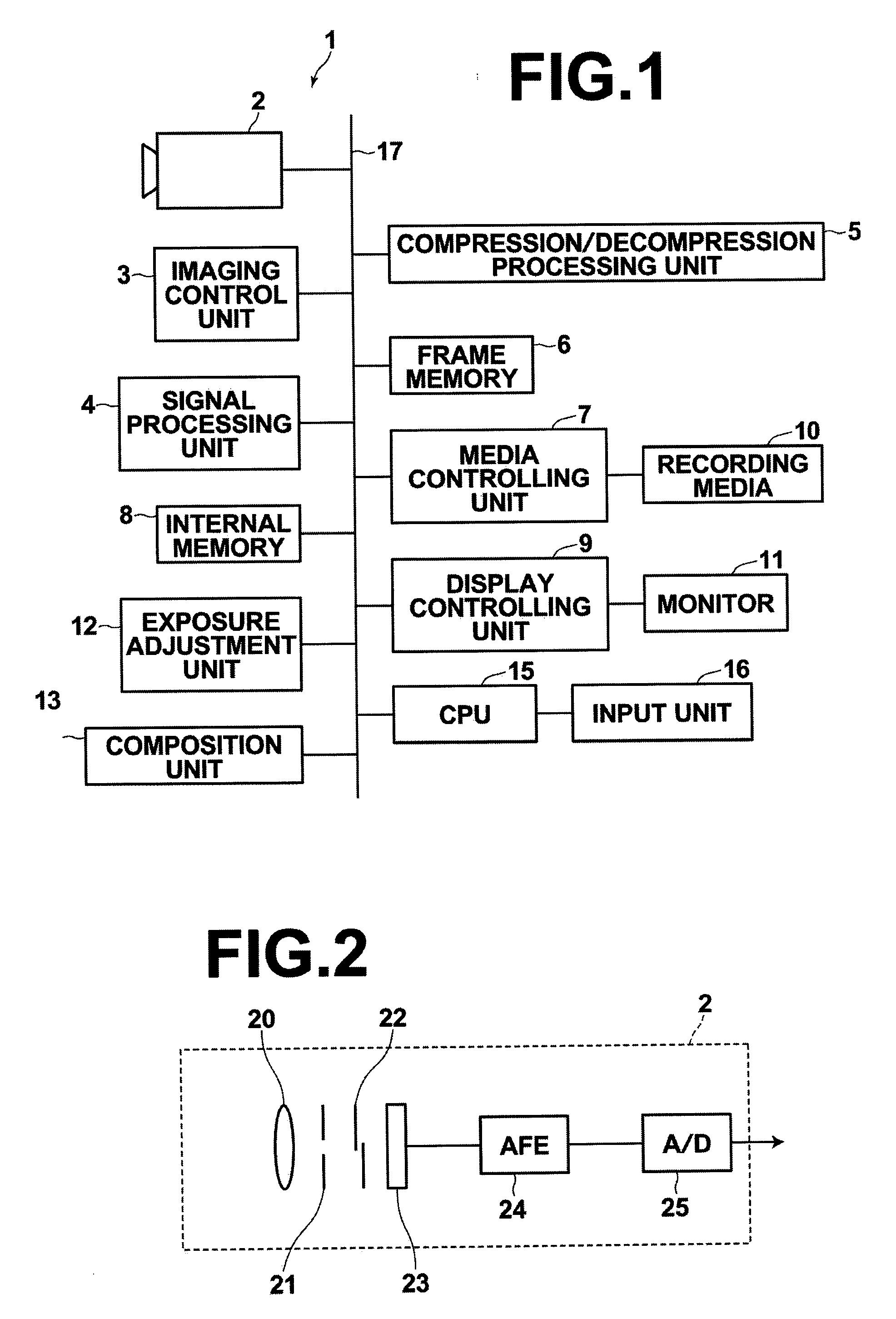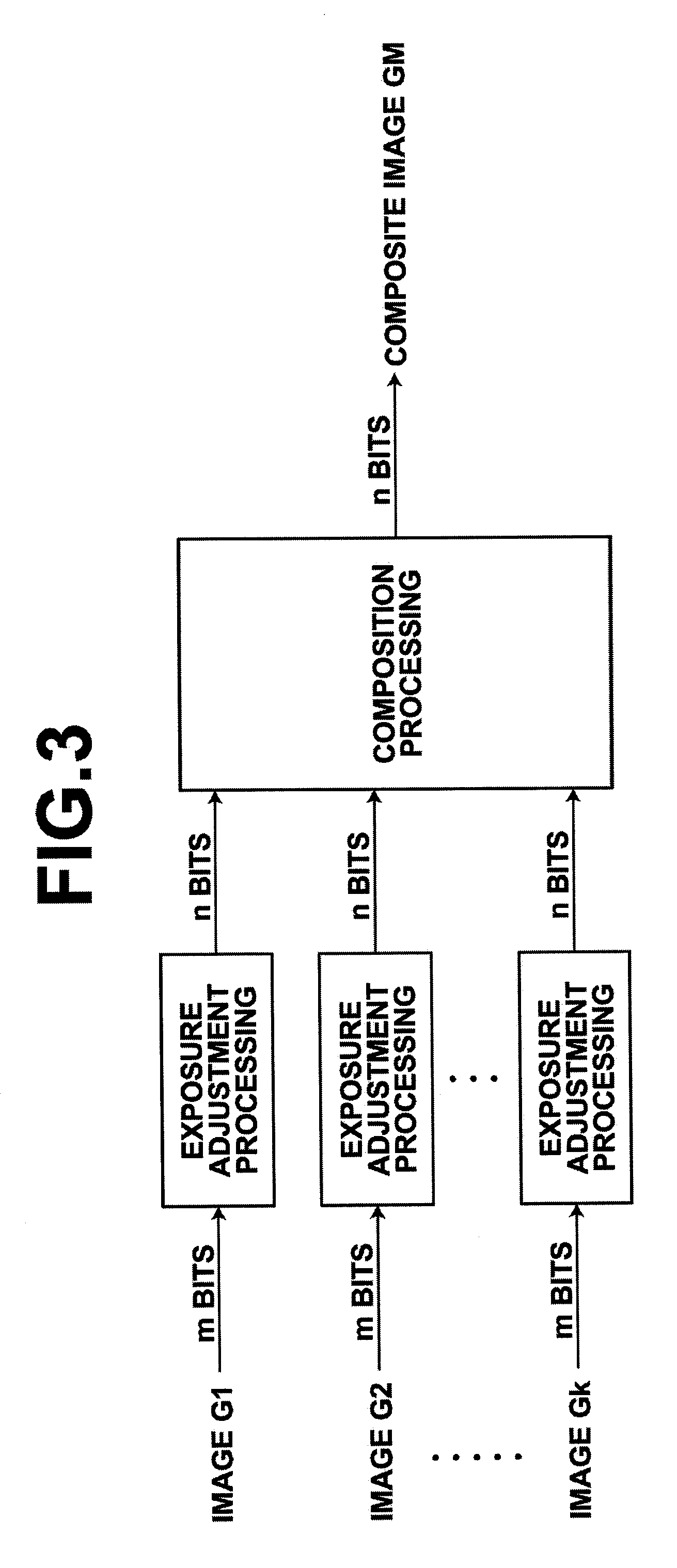Image processing device and method, and computer-readable recording medium containing program
a technology of image processing and program, which is applied in the field of image processing devices, can solve the problems of reduced resolution, increased circuit costs, and inability to carry out signal processing with bit accuracy, and achieve the effect of improving the tone reproduction of an imag
- Summary
- Abstract
- Description
- Claims
- Application Information
AI Technical Summary
Benefits of technology
Problems solved by technology
Method used
Image
Examples
first embodiment
[0060]Now, a process of combining the images obtained through the AE bracket imaging in the first embodiment is specifically described. In this example, it is supposed that the AE bracket imaging is carried out such that two images having an exposure difference of 2 Ev therebetween are obtained. It should be noted that the exposure difference can be changed depending on the necessary number of bits, and may specifically in the range from 2 Ev to 3 Ev. Of the two imaging operations for obtaining the two images, the imaging operation carried out with a lower exposure is referred to as low-exposure imaging and the imaging operation carried out with a higher exposure is referred to as high-exposure imaging. Further, the images obtained through the low-exposure imaging and the high-exposure imaging and subjected to the A / D conversion are referred to as a low-exposure image GL and a high-exposure image GH, respectively.
[0061]FIG. 4 illustrates a relationship between an amount of light and...
second embodiment
[0085]As described above, the exposure adjustment processing in the second embodiment is achieved by the gain processing and the offset processing. Therefore, the exposure adjustment processing can be achieved with simple calculation of multiplication, addition and subtraction. Further, the gain processing can be carried out in combination with optical black correction for correcting for a dark current of the CCD 23 and white balance correction applied to the images. By combining these correction operations with the gain processing, an amount of calculation when the signal processing unit 4 applies the signal processing to the composite image GM can be reduced.
[0086]Next, a third embodiment of the invention is described. It should be noted that the configuration of a digital camera, to which the image processing device according to the third embodiment is applied, is the same as the configuration of the digital camera according to the first embodiment, and only the operations to be ...
third embodiment
[0095]As described above, in the third embodiment, the exposure adjustment processing is carried out by applying the gain processing and the offset processing with referencing the tables, each of which outputs a lightness value after the gain processing and the offset processing for an inputted lightness value of each image. Thus, the exposure adjustment processing is achieved in a simple manner.
[0096]Further, the tables are adapted to apply the gain processing and the offset processing such that gradual change is provided at the saturated portion of the lightness of each of the images G1-Gk forming the composite image GM. Thus, smooth lightness transition can be provided at the boundary between the images forming the composite image GM, thereby further improving the image quality of the composite image GM.
[0097]Next, a fourth embodiment of the invention is described. It should be noted that, the configuration of a digital camera, to which the image processing device according to th...
PUM
 Login to View More
Login to View More Abstract
Description
Claims
Application Information
 Login to View More
Login to View More - R&D
- Intellectual Property
- Life Sciences
- Materials
- Tech Scout
- Unparalleled Data Quality
- Higher Quality Content
- 60% Fewer Hallucinations
Browse by: Latest US Patents, China's latest patents, Technical Efficacy Thesaurus, Application Domain, Technology Topic, Popular Technical Reports.
© 2025 PatSnap. All rights reserved.Legal|Privacy policy|Modern Slavery Act Transparency Statement|Sitemap|About US| Contact US: help@patsnap.com



